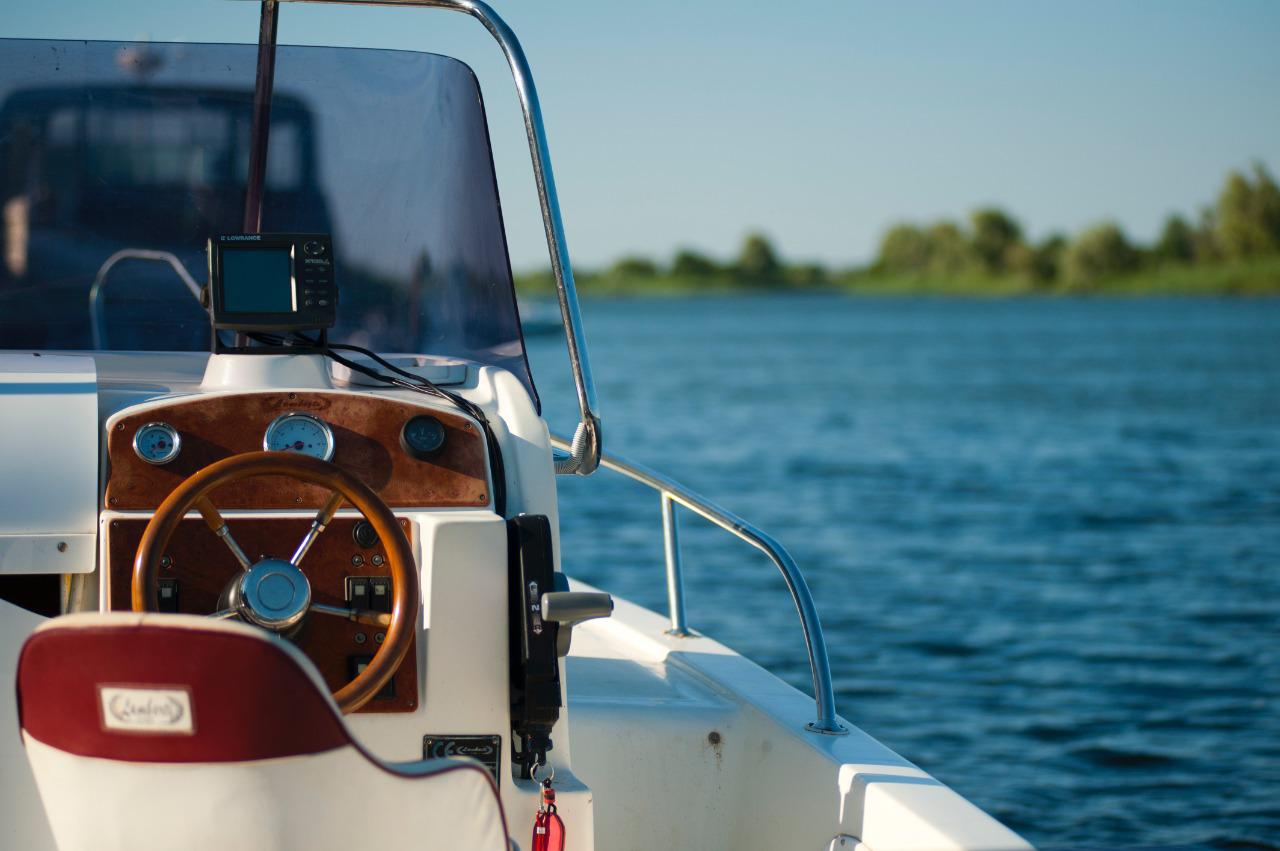
Mass Transport
The Mass Transport Industry comprising of Buses, Trucks, Railways and Metro Rail use Fiberglass components to reduce the overall weight, aesthetic looks, anti-corrosive properties and safety.
Know More
Marine
Fibreglass is one of the most durable materials for marine applications due to its anti-corrosive and moisture resistant characteristics.
Know More
Industrial FRP Products
Industrial world is having a huge requirements for FRP products in various sector.
Know More
Defence
Defence sector will be very much useful with modern and lightweight FRP products for their usages.
Know More
Construction FRP Products
Construction world is having a huge requirements for FRP products in various sector.
Know More
Medical
Health care sector will be very much useful with modern and lightweight FRP products for their usages.
Know More
Tempo FRP Panel
The Tempo Traveler with customized FRP panels which gives a unique product with quality and finish.
Know MoreDo I need a lot of experience to do repairs on my fiberglass boat or inflatable?
No, you don't need a lot of experience as long as you have access to all the proper materials and instructions. If your area doesn't have some specific products available, there are plenty of suppliers that offer their products online.
How do you clean FRP paneling?
You can use a soft bristle brush to remove dirt and other stubborn particles. If this doesn't work, then you can improvise by using a squeegee or scraper. You should only use water because any type of cleaner could damage the paneling.
What kind of adhesive can I use for FRP?
You can use any type of adhesive as long as it sticks to the color and feel of the FRP product. Make sure it's specifically designed for fiberglass products because anything else won't work as effectively.
Can I paint my FRP product?
Yes, you can paint a fiberglass product just like you would a wood or metal surface. If you are going to be painting your FRP boat or inflatable, then it's recommended that you use an epoxy-based paint because regular paint probably won't stick.
How do I care for my fiberglass boat?
Before using your fiberglass boat, make sure all the seams are sealed with adhesive and any cracks are repaired. This will prevent water from seeping into the cracks and causing damage that will be much more costly to repair. You should also regularly check for leaks, especially after it has rained or there was water in the boat before you used it.
Does contact cement work on FRP?
Yes, contact cement will work just fine on fiberglass products. If you are worried about the product sticking properly to whatever surface it's applied to, use adhesive primer.
I want to apply vinyl letters to my FRP boat or inflatable; what should I use?
You can use any type of adhesive that sticks well with vinyl. Make sure you don't use an adhesive that will cause the vinyl to peel off. For a better result, use a squeegee on the letters before they dry. You can also try using a heat gun or hair dryer instead of a squeegee if you want to be safer with your hands.
Can I paint my FRP boat?
Yes, you can paint your FRP boat just like you would any other type of surface. If the boat will be in water all the time or near open bodies of water, then make sure to use epoxy-based paints because regular paint could peel off.
How do I make my fiberglass product look new?
You can make your fiberglass product look new again by sanding down any dull areas until they are smooth. After the area is completely dry, you can refinish it with a liquid or paste wax so it will have a fresh shine.
How long does it take to install FRP paneling?
It takes around one day to remove the old paneling and replace it with new FRP products. If you are trying to save money, you can do some of the work yourself but it's best if you hire a professional because they will be able to do it in half the time while still meeting all your requirements.
If I find damage on my fiberglass boat, what should I do?
You should inspect the whole boat for any other damage that hasn't been repaired yet. After inspecting it, then you will know how much money is needed for repairs and what types of materials need to be purchased. Check for water leaks or cracks that might need epoxy putty or glue. You can also use fiberglass mat to protect the boat from any future damage.
How can I prevent my fiberglass boat from getting damaged?
You should always inspect your fiberglass boat before and after every usage to make sure it's safe for you to use. Make sure water doesn't leak into cracks or seams, which will cause serious damage if the problem isn't addressed immediately. Check for small scratches that might need filling with epoxy putty or paste waxing.
Can I install FRP by myself?
Yes, you can install FRP yourself as long as you read all of the instructions carefully and have a general idea of what needs to be done. It will probably take an entire day because most fiberglass project require a lot of work with sandpaper and adhesives.
How do I repair gelcoat on my fiberglass boat?
You can use a small brush to apply color for your repairs, which will cover any small scratches you have on the gelcoat. Large cracks or damaged sections can be filled with epoxy putty along with sanding down the area until it's smooth. Any large repairs will require several coats of epoxy resin and sanding in between each coat. After all of this is complete, then you can finish off the repair with paste wax or liquid wax to make it shine again like new.
Does FRP need a backer with it?
Yes, FRP needs a hard and sturdy backer to be properly installed. A backer will help the materials stay in place while you work with them and it will prevent any cracks from appearing during installation. If not, then your boat will become weak and start losing its shape over time because the material isn't thick enough.
Is FRP waterproof?
Yes, FRP is waterproof because it was originally designed for boats and other recreational water vehicles. However, you should never store your boat in the rain or use it in saltwater without proper preparation to prevent any damage from occurring.
If I have a leak on my fiberglass boat, what should I do?
You should repair any leaks as soon as possible before they cause serious problems with the hull. Make sure you check all of the seams and look under the boat every time you take it out to see if there are cracks or small scratches that need filling with epoxy putty. If not, then you will need to use fiberglass matting and resin to make larger repairs like replacing entire sections of the hull.
Is FRP good for replacing boat hulls?
Yes, FRP is a popular type of material used to replace fiberglass boats because it's more flexible and stronger. It will provide you with the same amount of durability as a fiberglass boat but it won't cost as much money.
Can FRP be installed over drywall?
Yes, FRP can be installed over drywall but you will need to install a backer first. The backer is an important part of the installation because it will provide the FRP with stability and help it stay attached to the wall. You should use screws or nails that are small enough for most drywall materials and then cover them with epoxy putty once they're attached to make sure no water gets in between the wall and the fiberglass matting.
How do I install FRP with rivets?
You should drill holes through the FRP material and attach it to your boat's frame tightly. Make sure you use epoxy putty over the rivets to prevent any water from leaking into your boat. You can also use fiberglass matting to cover up any exposed areas that might be rough or cut into by mistake during installation.
Is there a way to hide the seams of fiberglass?
Yes, you can hide the seams of fiberglass with epoxy resin or filler if you want them to look smoother. Another option is using gelcoat instead because you won't need filler or sandpaper for this process. You will need several coats of gelcoat, which take at least an entire day each time so make sure you turn off your fiberglass project before attempting this method.
How do I paint over FRP?
You should fill the area around your holes with epoxy putty because it will prevent any moisture from seeping in between the gap. If you leave the gap empty, then water might get in and damage or corrode your boat's frame once it dries up. Once the gap is filled with epoxy putty, you can use primer to cover up the layer before applying color coats on top of that for painting purposes.
Is there a way to tell if my FRP has gone bad?
Yes, you should pull gently on each section of FRP to see if it's starting to detach from your boat's frame. If sections don't come out easily, then you might need to use screws or nails to attach it back down. If any of your FRP material comes loose, but the core is still there, then you can glue it down with epoxy or gelcoat.
Is FRP a metal or plastic?
FRP is not a metal or plastic. It's made out of glass and resin, which is why it has its strength. FRP is also very durable because the fiberglass material creates layers that are thick enough to prevent damage.
Is FRP vinyl?
No, FRP is a type of fiberglass that's commonly used to make water vehicles stronger and more reliable. However, you should never expose your boat to saltwater or store it in the rain without covering it up first because it can damage or corrode your frame over time. You should also check all of your seams every time you take it out on the open water for any cracks or scratches that may need repair work before using resin or epoxy putty to fill in the area.
Is FRP better than abs plastic?
FRP is a type of fiberglass that's much stronger than abs plastic. It provides the same amount of durability as fiberglass but you won't have to worry about it corroding or breaking under pressure from being in the water so often. FRP will even prevent damage from shoreline rocks and other objects when docking at a marina or pulling up onto a beach.
What do I need to know before buying FRP?
You should consider asking yourself 4 important questions before buying FRP resin:
- Do you want to plan your boat project all by yourself or would you rather hire someone else to do the work for you?
- How much money can you invest in this project?
- What type of plans are you trying to create with your FRP materials?
- Does the boat have a frame or is it just floating on top of water?
The more time and effort that goes into planning your FRP project, the better your results will be.
Is epoxy used for fiberglass different from epoxy plastic glue?
Yes, if you're using fiberglass resin then make sure it has no fillers because fillers are made mainly out of plastic. You should also check how old your epoxy resin is before using it otherwise, it could get weak over time. Make sure you mix both parts together well before application because if you don't, then your FRP layer might not be strong enough to support the type of weight and pressure it needs to endure.
Is gelcoat a liquid or solid?
Gelcoat is a liquid that's brushed onto fiberglass frames before using epoxy resin to add more layers. Once it dries up, your boat will have a shine to it that makes it look like pure glass instead of plastic. You should use gelcoated fiberglass when you want boats that are completely waterproof and corrosion resistant for any harsh weather elements including rain and saltwater.
What can I use to fasten my FRP pieces together without getting holes in them?
You can use screws or nails instead of glue because if you try gluing your FRP pieces together, it will be very weak and come apart easily when there's pressure against its layers. You should also consider wiring the FRP pieces into the boat's frame because this allows you to tighten them all down while still creating a strong bond between the materials.
What are some common problems people have with their FRP?
One of the most common problems is that epoxy resins can get brittle over time, which means they won't be able to support any type of weight or water pressure on top of your boat. This might result in cracks or chips along the surface if you try using it for too long without properly maintaining it on a regular basis. There are other issues that could go wrong depending on how old your FRP materials are or how many layers of fiberglass you've put on top of it. Make sure you stay up to date on the proper way to care for your boat before using this type of material so you can prolong its life and increase its odds of staying safe on water.
Can I use resin instead of epoxy?
Yes, but only if your resin has no fillers because fillers are made out of plastic. Fillers can get brittle over time just like any other type of FRP material so you shouldn't rely on them to keep your boat looking great or fully functional in waters that have rough currents or unpredictable waves. You should also check the product's label carefully to make sure there aren't any harmful chemicals in it that could be bad for your skin or health.
Is FRP material expensive to buy?
The price of FRP materials will depend on how much you're willing to invest in them and how good the quality is. You'll get better results the more time, money, and effort that goes into planning out your project because this gives you a strong framework to work with. Epoxy resin is already very strong but planing out your boat's frame can make it even stronger while also ensuring there are no cracks or weak spots anywhere along its surface. Fiberglass tape is another essential part of any FRP project because it prevents water from seeping through tiny holes or seams between pieces of resin. If you don't use fiberglass tape then you should use more epoxy resin to patch up any holes or gaps in between two pieces of FRP.
Is it hard to work with fiberglass?
It can be difficult to work with fiberglass if you aren't familiar with it but the process will get easier over time. If you want a good looking boat then make sure you spend some extra money on quality materials like using gelcoated fiberglass instead of traditional plastic and normal glass. If you don't, then your boat will look awful once water seeps through its actual plastic layers and rips it apart from the inside out.
Where is FRP mostly used?
FRP is most commonly used in boats because they're designed to withstand high levels of water pressure and any type of weather. If you want to build a boat that doesn't need constant repairs every time it's used then you should definitely consider using FRP because it can be molded into different shapes and colors. Some boats are made out of pieces that are cut out by hand but others are 3D printed according to specific measurements for each area instead.
Is there anything that looks like fiberglass?
Yes, there's an artificial substance called carbon fiber which is very strong and lightweight just like real fiberglass. Carbon fiber is mostly used in cars or planes rather than boats because they already have steel frames underneath them to keep them afloat. However, the strength behind carbon fiber does make it better for holding certain parts together rather than building entire structures from FRP.
What is fireproof reinforced plastic?
Fireproof FRP is a type of material that's made out of chemical compounds that won't burn or melt even when exposed to extremely hot temperatures. This type of FRP can be used in products like oven doors, piping systems for large furnaces, and even the inside of fireplaces. It works by using aluminum oxide as its primary ingredient because it's actually very heat resistant on its own before any chemicals are added. If you add chemicals to create a gel then it will become even stronger and more durable while also being capable of withstanding high levels of heat without taking much damage at all.
What does FRP stand for?
FRP stands for fiber-reinforced plastic or fiberglass-reinforced plastic depending on the exact type of it. The difference between FRP and fiberglass is that one is made out of chemical compounds while the other relies on natural materials like cotton or deconstructed glass to be made into different products.
Why was FRP invented?
Fiber-reinforced plastic was invented because its inventor wanted to create a lightweight material that could support heavy loads without any problems. Before FRP came around, the only option for boat makers was steel because nothing else could hold up well against water pressure or even extreme weather conditions. It's also cheaper than using steel alone so more people are able to afford this material over something like metal.
How do you reinforce plastic?
To reinforce plastic would use two methods depending on what you want to actually do with it. One way is by using fiberglass as a frame so that the plastic can be added on top of it without adding extra weight or risking anything being damaged by water pressure. The other method would use FRP as the entire frame rather than just providing support for it, but this method is more expensive because you have to use specific chemicals along with expensive machinery during production.
What are some benefits of using FRP?
Some benefits of using Fiber-reinforced plastic include increased durability, increased lifespan, and reduced costs when compared to similar products made out of steel instead. Although you might need to pay more upfront to purchase materials like fiberglass or resin, your boat will last longer in between repairs which means you don't have to buy a new one as often.
